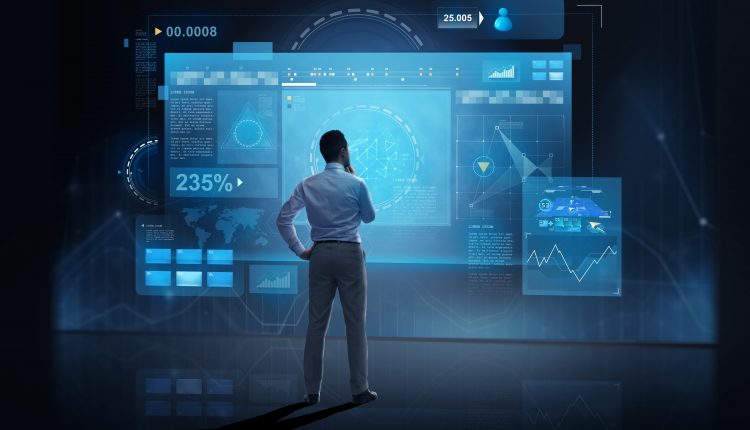Enabling workers in the digital age
Fady Richmany, Senior Director and General Manager, UAE, Dell Technologies, explains how digitally empowered workers can be the formula to gain competitive edge.


Today’s tech savvy employees enter the workforce with much higher expectations of their work tools and overall experience. Just around the corner, in the year 2020, millennials will make up half of the workforce, and a new generation of digital natives are poised to step into the workplace – Gen Z, born in and after the mid-90s. These are people accustomed to rich features and functionality on their personal devices, and they are looking for the same cutting-edge technology at work. The trend is clear – delivering a unique and productive worker experience is essential, and a smart office is a necessity in the war for good talent.
Do business leaders know and prepare for the fact that 42 per cent of millennials at the workplace are likely to quit a job because of substandard technology, and 82 per cent say that workplace technology influences the jobs they accept? According to a Dell Technologies study, ‘Gen Z: The Future Has Arrived’, 91 per cent of Gen-Z say that the technology offered by an employer would be a tipping factor among similar job offers.
The transformation into a digital workplace that meets worker expectations does not come about easily. Older enterprises are set in their top-down approach to IT services, wherein enterprise product investment by the IT department has resulted in an environment in which only vetted and approved corporate applications can be used. As you can imagine, this approach falls flat with today’s workforce, who have a strong understanding of what technology can do for them and are at ease using communications and collaboration tools even in their personal lives. In today’s workplace, IT departments can barely keep up with the constant demands for personalisation and easy-to-use solutions, alongside the demands of ‘correcting’ employee attempts to integrate their work and personal devices, applications, and even operating systems.
The unrelenting pace of digital and workforce transformation creates new challenges consistently, and yet also presents huge opportunities for companies to get things right. So, what can you do to create that workplace edge?
Ensure the availability of modern, mobile, collaborative tools
The objective is to make work and life easier for workers and enable them to do their job well with the least amount of friction. Machine learning, bots, interactive voice and virtual personal assistants, augmented reality, and virtual reality are key technologies being leveraged in the consumer world to enrich experiences and adapt content based on preferences and behaviours. These same consumer trends can now be adopted at the workplace to make workers productive as in the case of interactive learning, virtual personal assistants, process automation, or even intuitive application interfaces for tools they use often. A great example of a tool that has grown in popularity due to its ability to combine collaboration and communication into a single user-friendly chat-based interface is Slack. It allows workers to schedule a WebEx meeting, book flights or submit expenses, track projects issues and more, all from within the Slack interface. There’s effectively a bot for everything, and the catalog keeps growing.
Tailoring IT experiences to user needs
IT departments understand that an employee’s productivity is closely tied to the technology used by that worker, and it is extremely important that each employee have the IT tools best suited to the work they are doing. The modern workplace, however, needs to move away from the traditional IT approach of providing standardised IT systems to a more effective, employee-centric approach of accommodating employee preferences, where possible. This doesn’t necessarily mean that al employee communications now happen over social media messaging services!
According to recent reports, over 82% of workers believe that truly customised technology would make them more productive, while less than one in five are satisfied with their current IT set-up. Technology that delivers even modest gains to a single worker can deliver a crucial competitive edge when multiplied across an entire workforce, as productivity and hours worked will rise, attrition will drop, and employee satisfaction will increase, leading to an overall growth in corporate performance.
Digital technology should be accompanied by a true digital mindset among team members.
To define digital transformation as simply ‘the application of digital technology to impact all aspects of business’ is to diminish its true meaning. It also involves a change in how people do their work, make decisions, solve problems, and achieve results. Ultimately, a business cannot digitally transform unless the people do, and when the success of company initiatives is intricately linked with individual transformation readiness. This directly links back to improved business outcomes.
Building this transformation readiness is at the core of building a digital culture, requiring new ways of working across leadership policies, role definitions, and people processes. Engaging everyone in the business in learning, experiencing, and enjoying exposure to new digital tools is the other half of the digital culture strategy.
Harnessing technology to drive business success is human-centric activity. In the digital race we are in, organisations that step up to modernise infrastructure, inspire employees, and integrate the relevant applications will have an advantage over organisations that struggle with legacy systems, data deluge, and workforces that are resistant to change.





